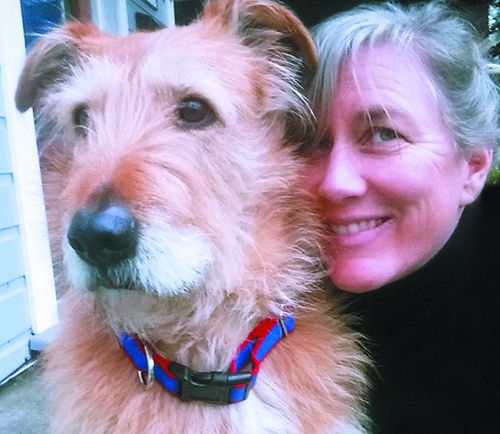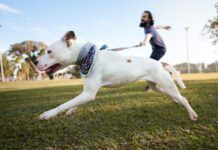September is when we editors are expected to write “back to school” pieces. Dog magazine editors tweak the usual parenting advice about helping kids adjust to school hours, offering tips on how to help our dogs adjust to the autumn absence of kids (at least during the day). This year, of course, all forms of “usual” are useless. This helps explain why the first article in this issue discusses how to increase our dog’s (and our own) enjoyment of our own back, side, and/or front yards; it doesn’t look like many of us are taking our dogs many places for a while.
Speaking of changing with the times, our next article, written by our Training Editor Pat Miller, discusses a few of the significant ways that we have changed our minds about dog training and dog gear over the past 23 years that WDJ has been in existence. Change is a good thing! If you think all your methods and gear are perfect, you’ve stopped learning – and that’s a shame. We think we’ve found a few ways to improve on older technology.
Another article in this issue is also custom-tailored for the times. North Carolina veterinarian and frequent contributor Dr. Catherine Ashe has written a brief but informative piece about canine viruses. Truthfully, reading about the viruses that can affect dogs helped me understand some bits of information I’ve been curious about regarding the virus that’s so much in the news. (I think you know the one.)There’s a quite long piece at the back of this issue. A new contributor to WDJ, Joanne Osburn, has written about stem cell therapy for dogs. Not only that, she took photos of almost every step in the process of harvesting a dog’s fat (that’s where the stem cells come from), extracting and enriching the stem cells, and preparing them for reintroducing them to the same dog in a powerful new form. How did she manage to take all those photos? She’s a lab technician in a veterinary clinic that uses this technology to help dogs heal after surgeries, regain mobility after years of pain and inactivity due to arthritis, and other medical marvels. As the owner of a rapidly stiffening senior dog who is nearly 13 years old, I am highly interested in this new therapy. It’s pricey, but I’d pay nearly any price to see Otto romp and play for as many years as he can, especially if it means we can delay the introduction of daily medications, which always seem to have some side effect when administered over the long term.
I hope you enjoy the issue.







can move their head down consistently you can move on and make things more advanced. You have to put the treat in one hand and point down with the other one. Your dog will see you pointing down with your hand and lower their head but this will only happen if and when your dog starts to understand it. Bringing their head up, you have to start with your head down and when bringing it up you use a thumbs up. So when their head is down you put your hand in a thumbs up position and when bringing your dogs head up give them a treat if they are following your hand.